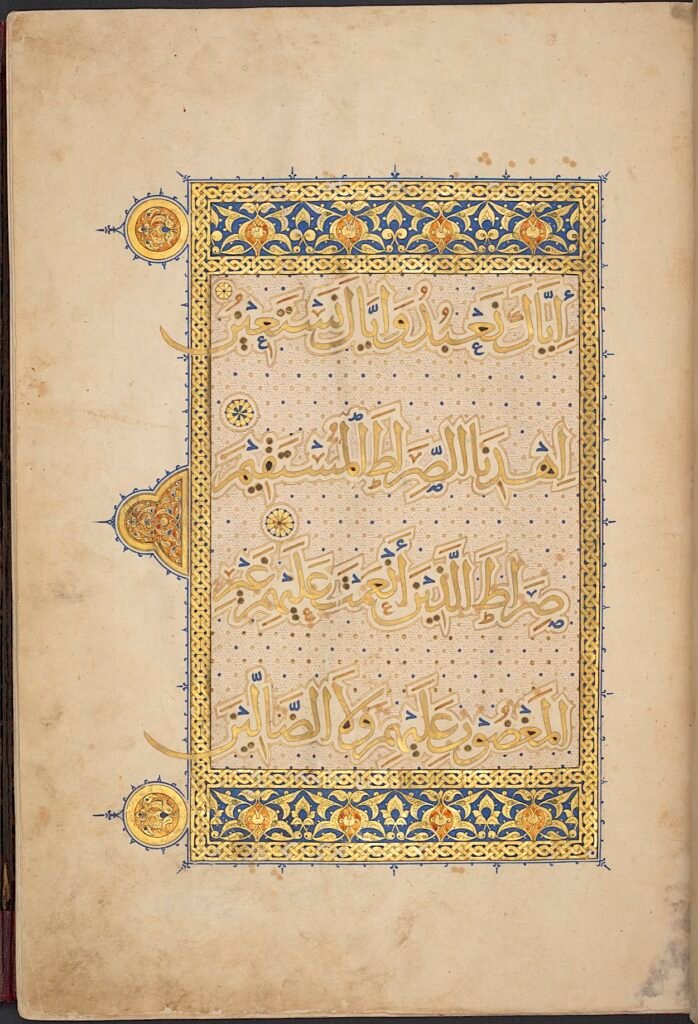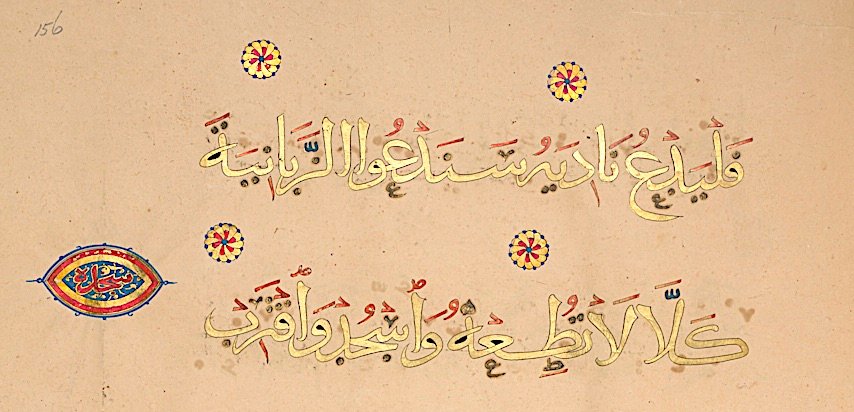Quran in Gold: The Story of Sultan Baybars
The Sultan Baybars Qur’an is one of the greatest artistic and cultural Artifacts of its time, now preserved in the British Library. This seven-volume Qur’an, completed in Cairo between 1304 and 1306 AD, is considered for its historical value and unequalled artistic merit.


Historical Setting and Patronage
This magnificent Qur’an was produced at the behest of Rukn al-Din Baybars al-Jashnagir, later known as Sultan Baybars II. Once more, its purpose for being commissioned is a matter of some scholarly debate. It could have been intended as a pious gift for the Mosque of al-Hakim in Cairo, which Baybars was instrumental in restoring after the earthquake of 1303. On the other hand, it could have been a donation to a religious foundation. Though its origins may be hazy, the fact that it moved from Cairo to the British Museum in 1858 alone attests to this find’s enduring value and universal appeal.
This Qur’an was commissioned by Rukn al-Din Baybars al-Jashnagir, later known as Sultan Baybars II. The question of why this Qur’an was made remains open to interpretation by the scholars. Maybe it was a pious gift to the Mosque of al-Hakim in Cairo, which Baybars had been instrumental in restoring after an earthquake in 1303. Other theories believe it was a gift to a religious endowment. Although the origin is a subject of mystery, its journey from Cairo to London and into the British Museum in 1858 is evidence of its worthiness because of its timelessness and universality in extent.


Historical Context and Patronage:
Information was not known about the patron and the purpose Sultan Baybars had for ordering the copying of this Qur’an. One conjecture is that Baybars, a high court official of Nasir Muhammad, had intended to present this to the Mosque of al-Hakim in Cairo. Evidence exists that he donated to the Mosque’s restoration after an earthquake in 1303. But it might have been a gift to a religious endowment. The uncertainties notwithstanding, the fact that the British Museum acquired it in 1858 proved its lasting cultural value and international significance.
Artistic Brilliancy:
Calligraphy and Illumination
The size is striking – physically: 47.5 x 32 cm. It was a respectable size for the highly meticulous works of its calligrapher, Muhammad ibn al-Wahid, and his team of illuminators, which included Muhammad ibn Mubadir, Abu Bakr Sandal, and Aydughdi ibn’ Abdallah. Gold thuluth script, outlined in black, with vowels in red and other markings in blue, is another distinguishing feature that sets this Qur’an apart from its contemporaries.
Precisely what makes it different, however, is the use of thuluth script throughout the body of the text, which the makers chose not to limit solely to headings. By so doing, they broke convention in an innovative and artistically bold manner. The text arrangement—exactly six lines per page, without large illuminated panels at the beginning to indicate chapters—is an aesthetic choice made quite deliberately; effectively, also, does it lend graphic impact to the manuscript.

Illumination and Ornamentation
Every Qur’an of Sultan Baybars volume is preceded by a magnificent double frontispiece or carpet page showing excellent design in marking out the volume number. Illuminated marginal medallions indicate the end of verses, and ornate markers are brought to guide the reader through the recitation with functional and aesthetic finesse.

Legacy and Significance
Besides its absolute physical beauty, the scholarly value of Sultan Baybars’ Qur’an is immense. The digitization of this Qur’an, like that undertaken in projects such as the British Library’s ‘Turning the Pages’ and Universal Viewer, lends to it geographical transcendence, whereby scholars or any person with interest from anywhere in the world can study its minute details and historical context. Its digitization and subsequent inclusion in these digital archives will preserve part of its culture for future generations. It will also give a window into its artistic traditions and religious customs under the rule of the Mamluk Sultans.

The Sultan Baybars’ Qur’an forms the acme of Islamic manuscript art during the period of the Mamluks. Its size, calligraphy, illumination, and historical journey explain centuries of Islamic cultural heritage. This Qur’an is an artifact that never failed to fascinate or inspire, whether visited in person in the British Library or explored virtually, thus rightly reaffirming its status as a cultural treasure of global significance.
The British Library retains the Sultan Baybars’ Qur’an not only as a preserve of history but as a living testament to the beauty and spiritual power able to be sustained across time within the Islamic manuscript tradition. In such a masterpiece, we keep regard and appreciation for the artistic imagination and deft skill of the people who designed and made this, recognizing their contributions to the rich tapestry of human creativity and devotion.
___________________________________________________________________________________________________________________________________________
This addition acknowledges Colin F. Baker’s role in the preservation and accessibility of the manuscript, giving credit where it’s due while maintaining the focus on Sultan Baybars’ Qur’an itself.
